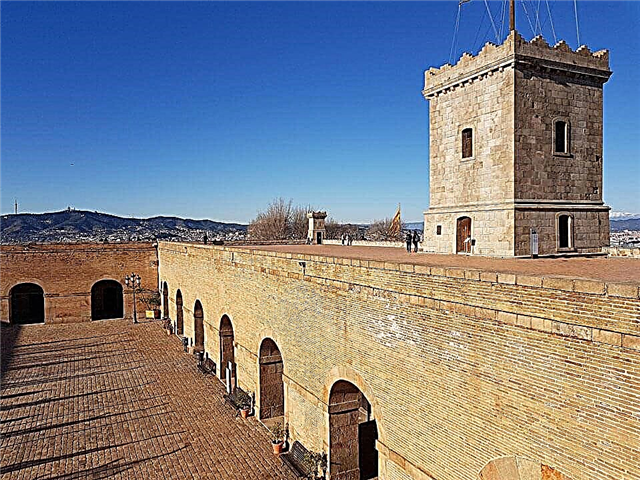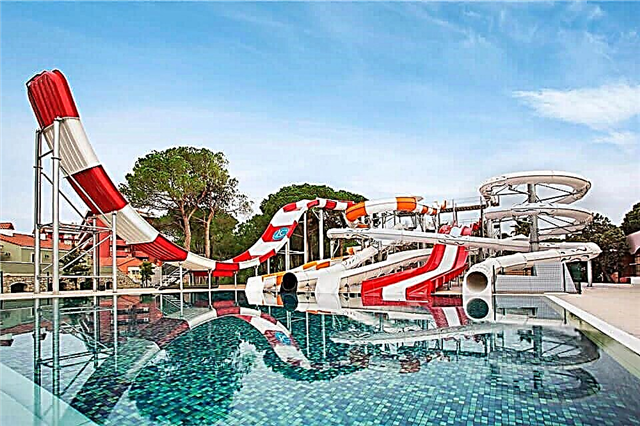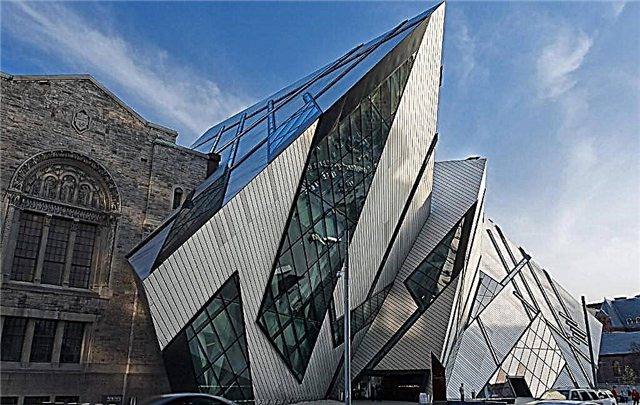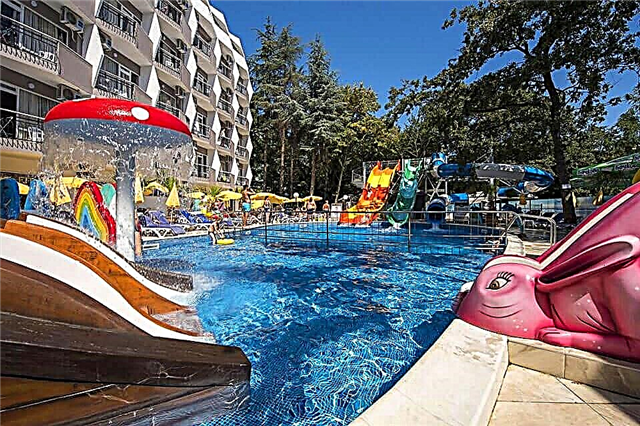Address: Russia, Pskov region, Pskov, st. Leon Pozemsky, 53
Build date: 1495 year
Coordinates: 57 ° 49'38.9 "N 28 ° 19'31.6" E
Cultural heritage site of the Russian Federation
Content:
The picturesque temple is located on the northern border of ancient Pskov. It was vowed, and the reason for the construction was the deliverance of the city from a terrible plague epidemic. The street where this temple has stood for more than 520 years was formerly called Zvanitsa. Today the church is well restored and open to pilgrims and tourists. It fits perfectly into the architectural ensemble of the fortifications of the Varlaam corner and is considered one of the pearls of Pskov architecture.

View of the church from st. Leon Pozemsky
Temple history
The Varlaam temple is located in Zapskovye. This is how the quarters of the city located north of the Pskova River have been called since ancient times. The first wooden church was erected here in one day in 1466 and consecrated in honor of the Novgorod miracle worker Varlaam, who founded the famous Khutynsky monastery. It was built on a vow when the terrible pestilence ended, which mowed down a large number of Pskov residents.
In those days, next to the temple there was the Varlaam Gate, through which it was possible to get to the Pskov Zastenie from the north. Through these gates in 1472, the bride of the Grand Duke John III Vasilyevich, Sophia Paleologue, entered the city.
In 1495 the wooden church was replaced by a stone one and it became a parish for the inhabitants of Zapskovye. In the annals, information has been preserved that the temple burned out several times during the fires. This was the fate of many stone churches in Russia. They periodically suffered from fire, since the temples were surrounded mainly by wooden buildings.
In 1615, the ruler of Sweden, Gustav II Adolf, who bore the title of "Snow King", attacked Pskov from the north. The main resistance to the enemy troops was concentrated around the Varlaam temple. From it, the defenders of the city fired at the Swedes, and when the enemies managed to seize the Varlaam tower on the fortress wall, the Pskovites blew up a powerful fortification together with the enemy.
In the bloody battle with the Swedes, many Russian soldiers were killed. In memory of them, until 1917, every year in Pskov there was a crowded procession with the cross, and the priests of the Church of Varlaam held funeral services for the dead.
By the beginning of the 19th century, the temple fell into disrepair, and the question arose of demolishing it. However, the Holy Synod opposed the destruction of the shrine, and the church was not touched. Over the next decades, significant changes were made to the original appearance of the temple. The builders built a choir on the western wall and a cast-iron staircase leading to it. In addition, they rounded four square pillars in the main quadrangle, and due to this, additional space inside the temple was freed up.
A side-chapel was added to the church in honor of St. Nicholas and the porch was reconstructed. The wooden belfry located to the west of the temple was replaced with a stone one and three pairs of bells were placed on it. The largest ones weighed more than 65 pounds and were cast by famous Valdai craftsmen in 1870. Soon, on the site of the destroyed Varlaam Gate, a stone chapel was erected in honor of the Nativity of the Virgin.

View of the church from the south
The old temple gathered a large number of believers and flourished. At the end of the 19th century, a parish guardianship was opened under him. There was an almshouse, where the elderly nuns found shelter and food, and a small candle factory worked. In the Barlaam Church, female and male parish schools were accepted, in which they taught writing, reading and the basics of counting.
The headman of the church, the merchant Vasily Yakovlevich Safyanshchikov, took special care of the school. A two-story brick building was erected for her with 12 thousand rubles allocated by him. On the first floor, classes for boys were taught, and upstairs, girls were mastering the basics of literacy. The school provided rooms for teachers and servants, as well as utility rooms. It is interesting that the old school building has survived to this day, and now it is a residential building (L. Pozemsky St., 51).
In 1917, a revolution took place in Russia, and the attitude of the authorities towards religion changed dramatically. From 1920 to 1937, the Varlaam Church and the Resurrection Church assigned to it were active - they were owned by the Orthodox community under a lease agreement. In 1935, the Christmas chapel was closed, and two years later, the Barlaam Church. By the decision of the Pskov City Council, the former cult building was given over to a cinema and warehouses.
During the Great Patriotic War, Pskov was under fascist occupation for a long time. Under the Germans, the Pskov Orthodox Mission was created and in eight churches of the city they were allowed to conduct divine services. In these difficult years, Konstantin Yakovlevich Shakhovskoy (1905-1966), who came from a noble family of princes Shakhovsky, became the priest of the Varlaam Church. Thanks to his efforts, the old church was revived, church services were regularly held in it, help was provided to the sick and refugees, and a Sunday school was opened for the children of parishioners.
In 1960, the Varlaam Church received the status of a historical and architectural monument and was taken under state protection. The beginning of the 21st century was marked by extensive restoration work for the Church of Varlaam. The builders repaired the façade and the altars, and in 2006 installed bells on the belfry, cast according to old technologies by the craftsmen of the Yaroslavl city of Tutaev.
Seven bells are named after members of the family of the last Russian emperor Nicholas II, and the largest of them has an icon depicting the royal martyrs. The eighth bell is installed on the belfry to harmonize the sound. The total total of the bells is 900 kg.

Rear view of the church
Architectural features
The ancient temple is very beautiful. It occupies an elevated position relative to the nearby Velikaya River, and therefore is visible from afar. The one-absid quadruple has an almost cubic shape: 9 by 9.25 m. According to the traditions of Pskov architecture, the church facades are divided into parts by shoulder blades, and the apse of the quadruple and the drum are decorated with a curb-runner-curb pattern typical for Pskov temples.
The main volume is complemented by a wide vestibule with a belfry, a south aisle and an annex on the north side. The two-span belfry stands on three stone pillars and is crowned with a four-pitched roof with a cross. A large onion dome is installed above the main temple, and a small one - above the chapel. The entrance to the temple is marked by a wide porch covered with a gable roof.
The temple iconostasis contains several old icons, the oldest of which were painted in the 17th century. They depict Saint Varlaam of Khutynsky (in full growth), John the Baptist, Ascension, Transfiguration, Resurrection of Lazarus, Miracle of George on the Serpent, Archangel Michael, Almighty on the throne, Descent of the Holy Spirit, etc.
Inside the church, you can also see paintings on the walls and ceiling. The frescoes were made in the 19th century with oil paints on damp plaster. They depict the holy martyrs, metropolitans, the Sermon on the Mount, four evangelists with symbols and Basil the Great in growth.
Current state and visiting regime
Today the ancient church is a functioning Orthodox church and has the status of a federal monument. It is open daily to believers and tourists.
In addition to the main altar, the chapel in honor of Nicholas the Wonderworker was consecrated in the church, in which a three-tiered wooden iconostasis of the 18th century has been preserved. The patronal feast is celebrated here on November 19, the day of memory of the Monk Varlaam of Khutynsky.
How to get there
The temple stands in the city center, north of the Pskov Kremlin, on the street. Leon Pozemsky, 53.If you use public transport, you can get to the church by buses No. 1, 7, 7a, 18, 25 and route taxis No. 51 and 51A (stops "Alexander Nevsky Street" or "Oleg Koshevoy Street").

The interior of the church
It is easy to walk from the Pskov Kremlin to the temple along Leon Pozemsky Street (950 m). If you go by car, then on the southern outskirts of Pskov you need to turn off the Leningradskoe highway (E95) onto the Pskov-Izborsk highway (A212) and go to the city center. Leon Pozemsky Street (about 1 km) leads from Lenin Square to the temple.











